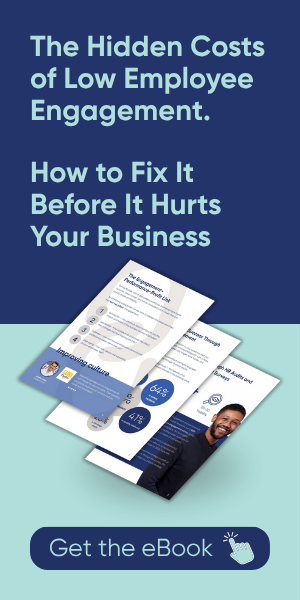Turn quiet quitters into thriving contributors.
According to a recent study by Cognassist, 19% of staff in the UK are quiet quitting, doing only the bare minimum!
Employees feeling disengaged due to their skills not being recognised or used effectively.
What can business owners and leaders do about this?
The challenge isn’t trendy benefits, it’s about rebuilding trust, giving people purpose, and supporting growth.
Turning the dial from disengaged to engaged workers takes a holistic and strategic approach. While you may think this sounds like hard work, it’s probably because it is. Well, anything worth doing takes courage and effort, right? Put into context, Gallup’s ‘State of the Workplace report’ indicates that disengaged employees are costing companies 34% of their salary, annually. And, coupled with only 10% of the UK workforce are classed as engaged, these alarming stats prove why it’s critical business leaders do something about this now.
This isn’t an optional fork in the road.
Engaged staff are more productive, less salary wasted, therefore in simple terms, the business is more profitable.
Disengaged staff cost in finance, legal risk, disruption and reputational damage.
How to tackle this employee endemic by looking at 10 key HR areas
Firstly, start by running a HR audit. This is a line in the sand, a foundation from which to grow from. The audit looks at:
- People strategy, alignment with organisational objectives
- Recruitment selection
- Pre-boarding and onboarding
- Employee relations
- Learning & development
- HR & employment law documentation
- Pay & Reward
- Employee wellbeing and safety
- Communication and employee engagement
- Diversity & inclusion
Delivering the results back to employees, in debrief sessions or workshops, is a great way to highlight key areas of focus, providing clarity and togetherness.
Building out structured training programmes, particularly for managers, enables and empowers staff engagement, becoming the voice of the business and its vision.
Align strengths and build trust by refocusing roles to suit peoples proclivities, paving the way for career development.
Your culture isn’t written on paper, or on the walls of your offices. It’s built into every interaction, when anyone walks through the door, how people are treated, how they feel when they wake up. Having empathy for people, and creating a psychologically safe place to work, gives workers the foundations to be great.




